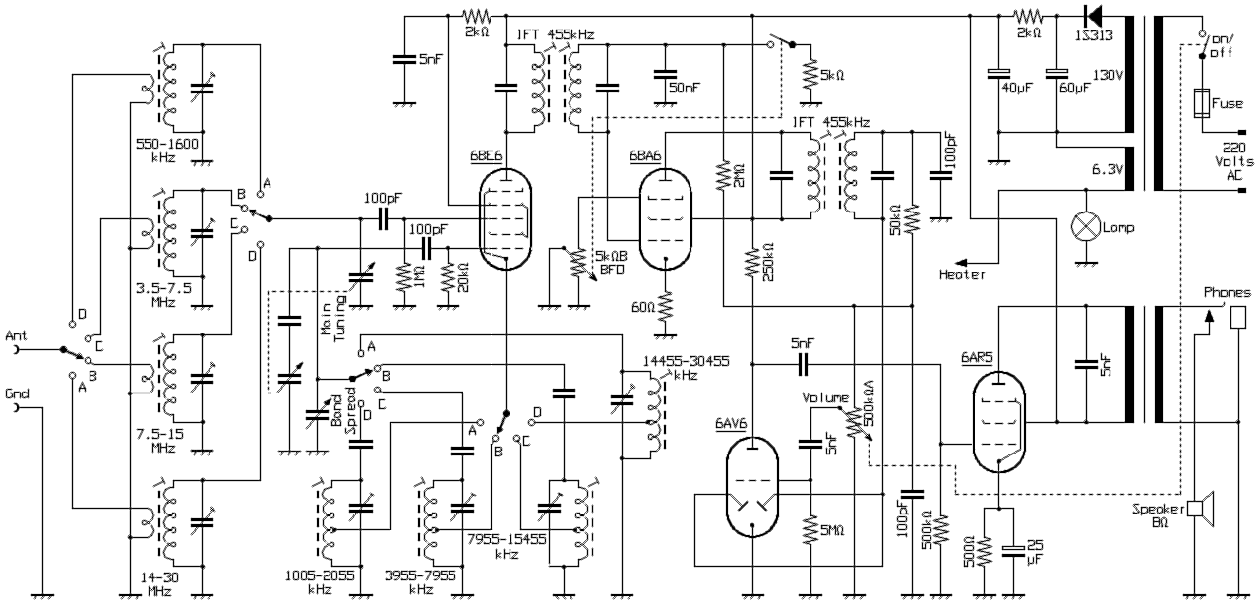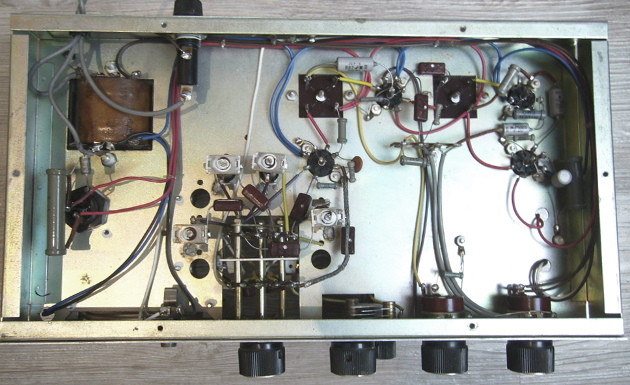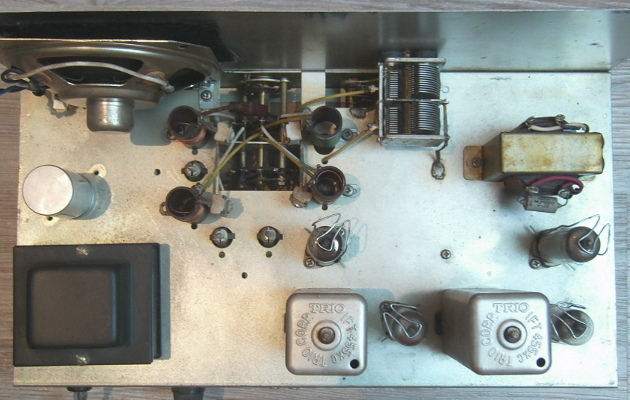Mehrbereichs-Super Unica UR-400
The device presented here is a superhet with medium-wave and three short-wave ranges. Since the circuit is very simple, it is well suited as a paragon for the replica. The receiver was manufactured in Japan in the 1960s and launched as the Unica UR-400.

Circuitically, the device is very similar to the Heathkit GR-64, which was offered as a kit and where the circuit is essentially on a printed circuit board. In contrast, the UR-400 is built in free wiring on a metal chassis. While the GR-64 has a continuous frequency range of 550 kHz to 30 MHz, at the UR-400 the three SW bands start each at the beginning of the ranges of the 80m, 40m and 20m band. This has the advantage of a slightly better band spread, but this results in the receivable frequency range, a gap of 1.6 to 3.5 MHz.

At the input the receiver works with a self-oscillating mixer with a special mixing tube of type 6BE6. This is followed by a single-stage IF amplifier operating at a frequency of 455 kHz. The IF amplifier can be used as regenerative stage by connecting the brake grid to ground via a potentiometer. The greater the resistance set, the greater the normally undesirable feedback. As a result, however, gain and selectivity can be increased. At some point, the IF amplifier starts to oscillate. As a result of the superimposition of the self oscillation with the received signal, telegraphy and single-sideband transmissions can then be detected. The subsequent rectifier and the two-stage audio amplifier are designed in the usual way, as in simple AM broadcast tube receivers.

The chassis underside reveals a very simple structure and invites for replica. So I constructed a receiver with similar circuit, where I made experiments on the input side with both an EK90 (6BE6 equivalent) and with an ECH81. With the EK90 the reception in the upper frequency range up to 30 MHz It could be brought the stability better under controll. However, was the adjustment very "fumbling", because the setting of the input circuit had a strong effect on the oscillator frequency. With the ECH81, where the triode system is usually connected as a separate oscillator, this problem was smaller. With increasing frequency and consequently decreasing variable capacitances the circuit became more unstable, so that above 20 MHz set a parasitic tendency to oscillate. The problem could certainly have come to grips with smaller inductances and a fifth wave range from 20 MHz, which, however, could not be implemented constructively. I had the circuit namely built into the housing of an old home receiver, wich originally worked with transistors. For this I removed the printed board with the transistor circuit and replaced it with an aluminum sheet, on which the circuit, similar to the UR-400, could be built in free wiring technology. The pushbuttons for the original wave bands LW, MW, SW and FM were now used to switch the MW and the three SW ranges. Finally, unlike the circuit shown here, I decided to use the variant with the ECH81 and limited the reception range to about 20 MHz.

Unfortunately, I no longer have any photos of my former home-made device. Therefore, at this point still a photo of the chassis top of the Unica UR-400.